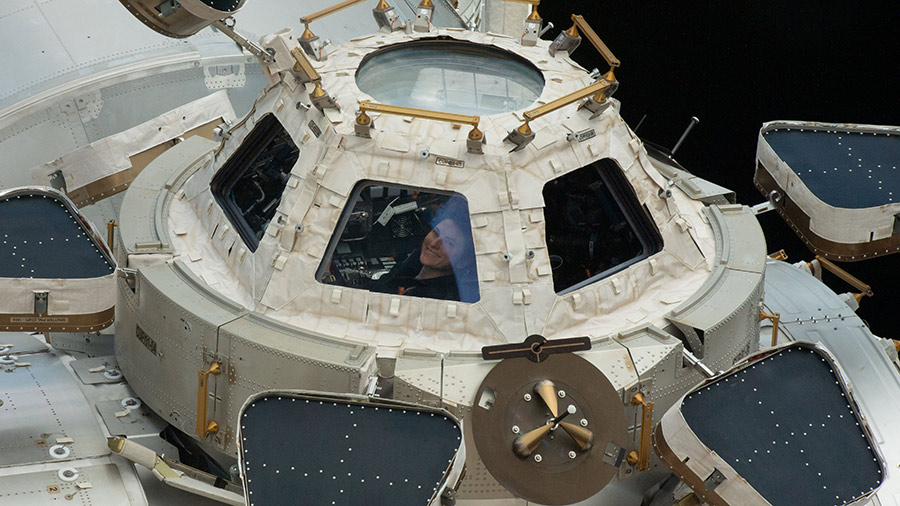Crew Has Health Checks, Studies Construction on Planets

Spine scans and eye checks filled a portion of the Expedition 66 crew’s day while also preparing for CubeSat deployments and studying space construction techniques. The astronauts and cosmonauts also worked on U.S. spacesuits and inspected Russian modules aboard the International Space Station.
Medical checkups are a regular occurrence on the orbiting lab as scientists observe how microgravity affects the human body. Data from a variety of in-depth examinations of astronauts’ bodies helps doctors develop methods and treatments to keep crews healthy during long-term space missions.
NASA astronaut Kayla Barron swapped roles as the station’s crew medical officer with ESA (European Space Agency) astronaut Matthias Maurer during Tuesday afternoon. The duo took turns scanning their lumbar spinal section using the Ultrasound 2 device with remote guidance from a doctor on the ground. Barron then wrapped up her day with NASA Flight Engineer Raja Chari for eye imaging tasks once again using the Ultrasound 2 scanner.
Space scientists are also studying how to build structures using resources on other planetary surfaces. One experiment being worked on today by Maurer is looking at how concrete hardens with the lack of gravity. The German astronaut worked in the Harmony module with a variety of cement mixtures observing how pores, bubbles and crystals develop as the samples harden.
NASA Flight Engineer Mark Vande Hei spent his day on life support maintenance tasks. The astronaut, who is nearing 300 continuous days in space, partnered with Chari servicing components that control the thermal environment and the transfer of fluids throughout the space station.
Three-time space station visitor Thomas Marshburn of NASA worked on Tuesday morning readying a small satellite orbital deployer for deployment outside the Kibo laboratory module. The veteran astronaut also worked on U.S. spacesuit gear, including batteries and high-definition cameras, during the afternoon.
In the orbiting lab’s Russian segment, Commander Anton Shkaplerov photographed the interior of the Zvezda service module for inspection by engineers on the ground. Flight Engineer Pyotr Dubrov checked communication hardware then serviced the ventilation system inside the Nauka multipurpose laboratory module.
Learn more about station activities by following the space station blog, @space_station and @ISS_Research on Twitter, as well as the ISS Facebook and ISS Instagram accounts.
Get weekly video highlights at: http://jscfeatures.jsc.nasa.gov/videoupdate/
Get the latest from NASA delivered every week. Subscribe here: www.nasa.gov/subscribe
Heidi Lavelle
Powered by WPeMatico







